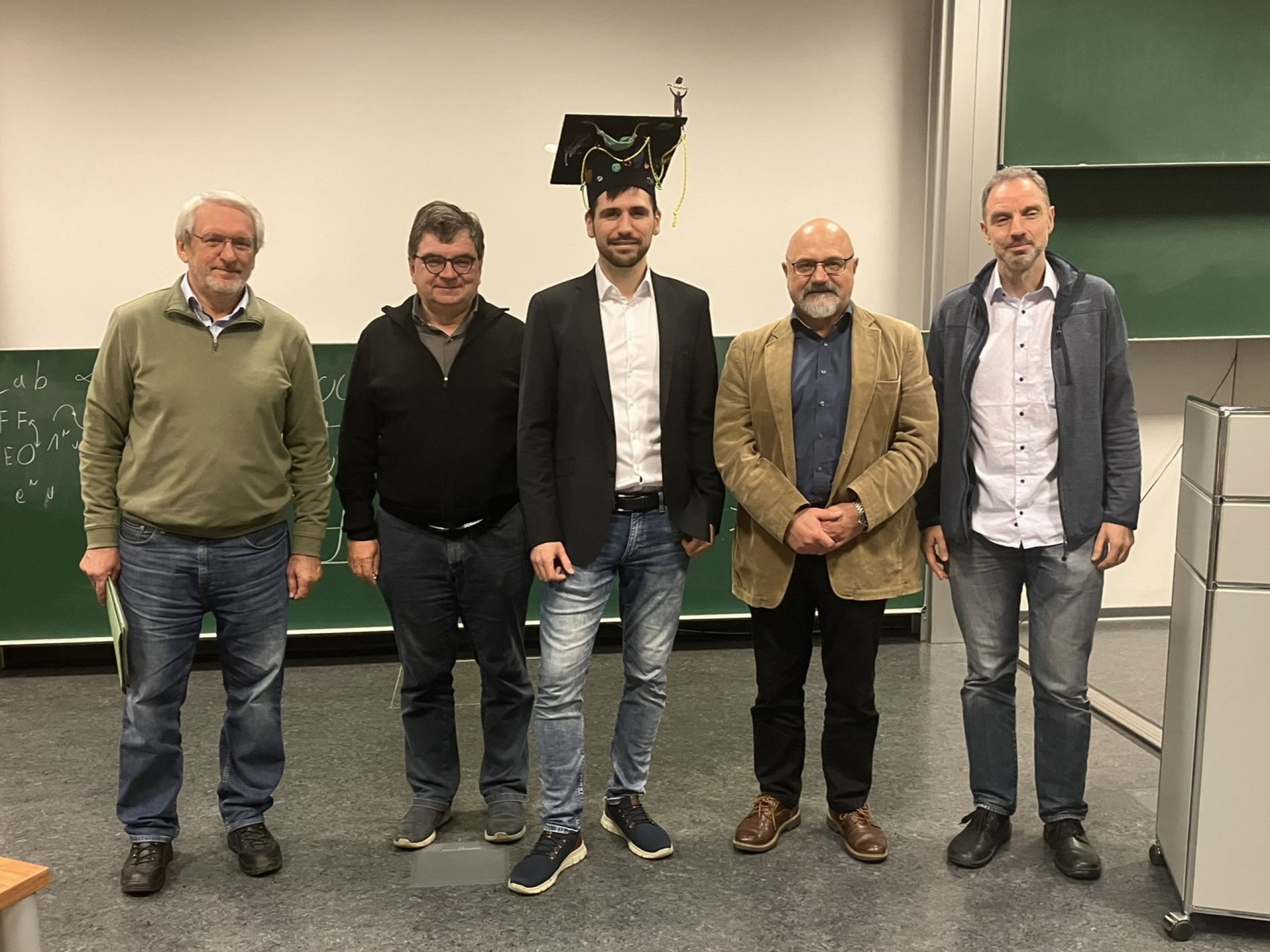October 30, 2025
PhD Tom Olsen
Computational basis for modeling extreme astrophysical systems.
Tom Olsen developed a novel method to compute radiation transport and radiation-matter interaction in the context of strong gravity and high energy physics. The dissertation was supervised by FIAS Senior Fellows Volker Lindenstruth and Luciano Rezzolla.
To understand the most energetic cosmic events, such as neutron star mergers, black holes, and core collapse supernovae, it is necessary to simulate them. Doing so requires solving the Navier Stokes, Maxwell, Einstein, and radiation transport equations simultaneously on a supercomputer. While the first three can be handled efficiently with established numerical techniques, radiation transport remains a major challenge for existing methods
In his thesis Olsen introduces a new solver based on the Lattice Boltzmann Method that can model radiation transport in curved spacetime, i.e., within the full framework of general relativity. This capability is essential for simulating astrophysical systems in which strong gravity and intense radiation interact.
The new method is numerically stable even with large time steps, reduces computational cost through an adaptive treatment of photon propagation, and performs reliably across both optically thin and optically thick regimes. It handles gravitational redshift and light bending consistently, making it suitable for realistic simulations of high-energy astrophysical phenomena.
Olsen now works at Digital Film Technologies in Darmstadt, where he applies his knowledge in GPU programming to the post processing image pipeline of analog film scanners. In his spare time, he works on his own game/visualization engine.
